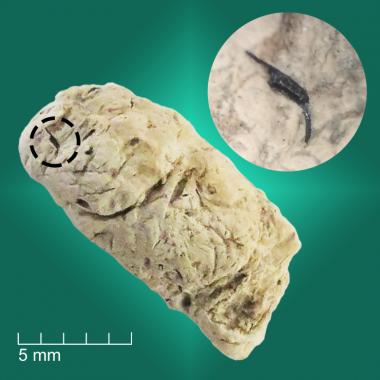
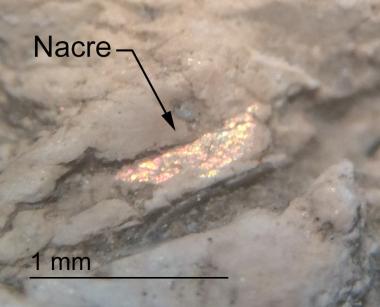
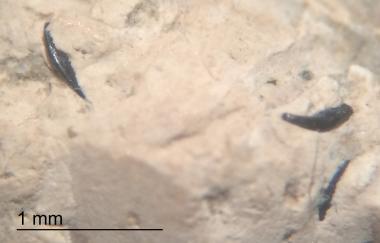
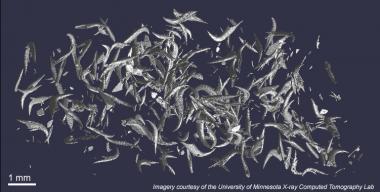
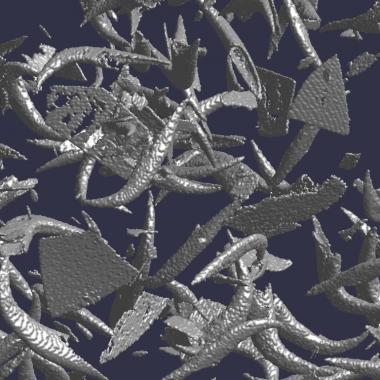
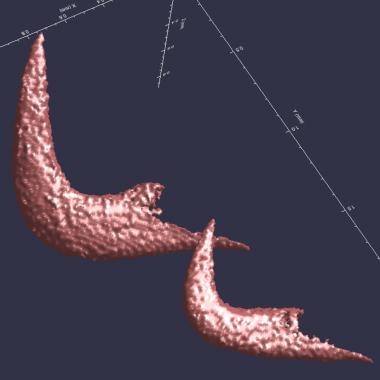
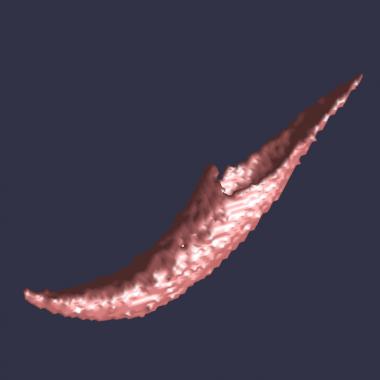
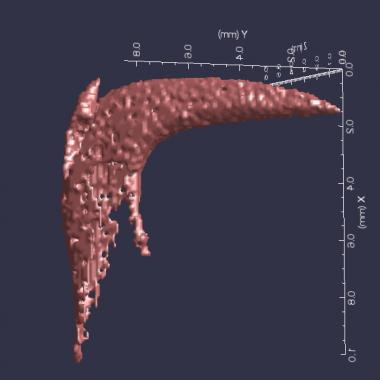
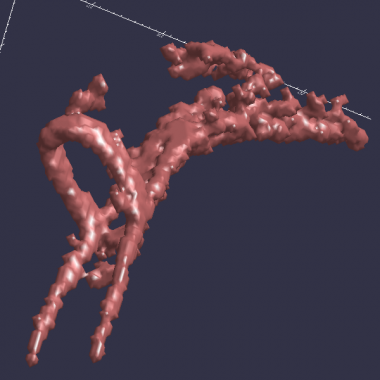
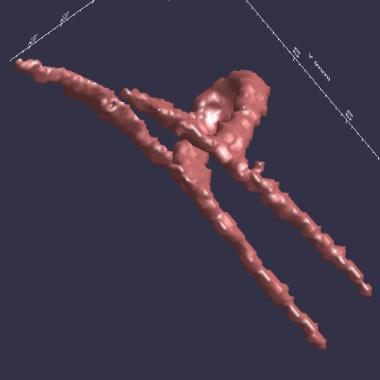
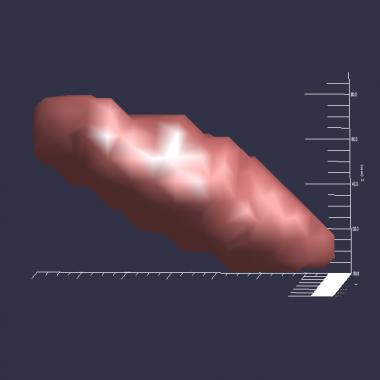
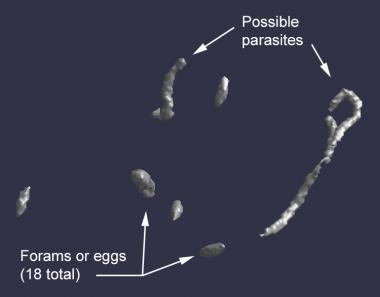
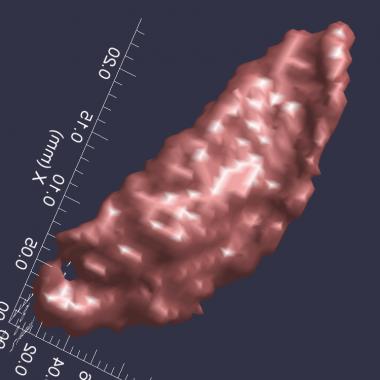
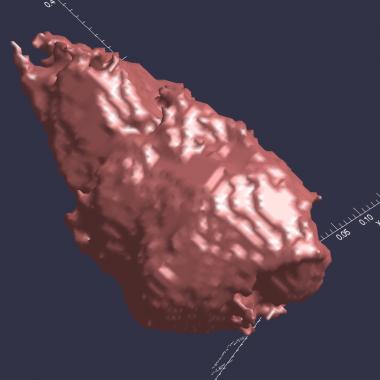
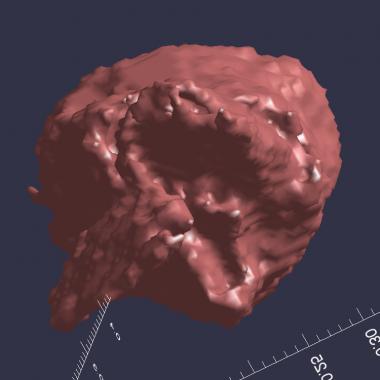
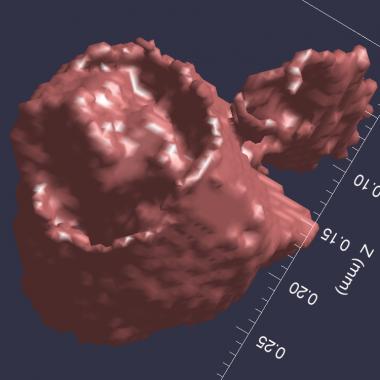
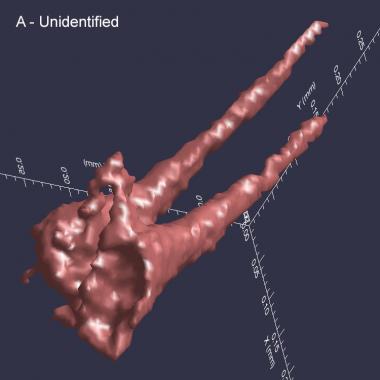
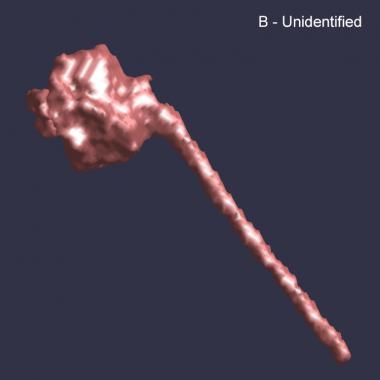
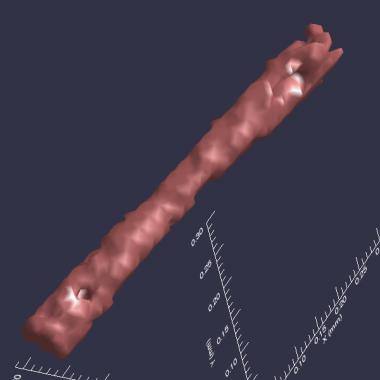
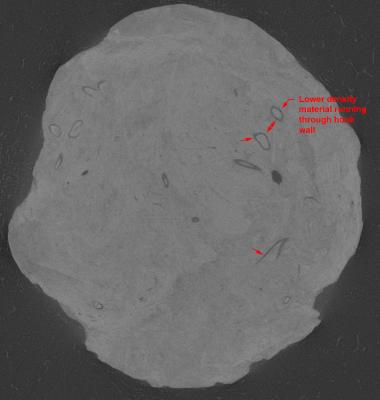
Sometimes the best things come in small packages. That certainly holds true with this tiny coprolite. Under a microscope you can see that the poopetrator made a meal of some sort of cephalopod. A tiny bit of nacre (iridescent shell material) and several hooks can be seen on the surface under magnification. What is really exciting is the University of Minnesota X-ray CT Lab performed a micro CT scan of this coprolite allowing us to see what is on the inside. It revealed 241 undigested hooks! There were also numerous flat plates which may represent bits of cephalopod shell, similar to that seen on the surface. Many of the inclusions revealed by the scan have yet to be identified.
Belemnites are one type of cephalopod known to exist in Jurassic seas that once covered much of England around 160 million years ago. They had ten arms lined with tiny hooks that helped them catch their prey. Many times predators would regurgitate the hard shell of these animals. However, these hooks could also be from a yet unknown species of squid or octopus. The soft bodies of cephalopods rarely fossilize.
